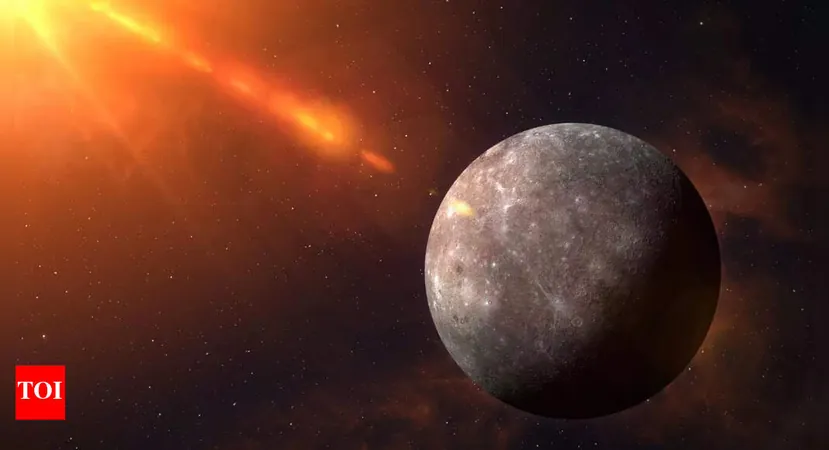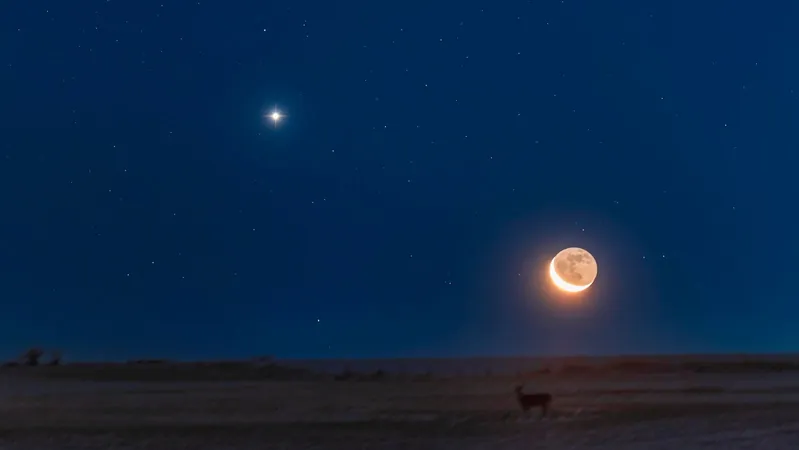
Is There a New Planet in Our Solar System? The Shocking Evidence Behind "Planet Y"
2025-08-25
Author: Liam
A Mysterious Warp in the Solar System
Exciting new research suggests that there may be an unseen force at work in the outer reaches of our Solar System, potentially revealing a new celestial body—dubbed "Planet Y." This mysterious planet is theorized to be smaller than Earth and could be lurking between 100 and 200 astronomical units (AU) away, impacting the orbits of Trans-Neptunian Objects (TNOs) in fascinating ways.
What’s Causing This Distortion?
A recent study has identified a surprising warp in the orbital trajectories of TNOs, specifically within 80 to 400 AU from the Sun. This distortion hints at the gravitational pull from Planet Y, a world yet to be detected. Researchers meticulously measured the orbital alignment of TNOs, filtering out those synchronized with Neptune, leading to impressive findings about our Solar System's structure.
The Numbers Don’t Lie!
Through statistical analysis, it's revealed that the tilt of these distant objects' orbits is about 15 degrees off the Solar System's invariable plane— a discovery with only a 2-4% chance of being random.
Could Planet Y Be the Culprit?
The authors of the research suggest that if the warp is genuinely caused by a planet, it would likely have a mass between that of Mercury and Earth, located at an inclination greater than 10 degrees. Interestingly, a larger planet would have affected inner celestial bodies as well, which provides key insights into its size.
Distinguishing Between Planet Y and Planet Nine
While the existence of various theories surrounding hidden planets exists, it's essential to draw a line between Planet Y and the famed Planet Nine. The latter is proposed to be a massive object, potentially several times larger than Earth, residing far beyond the Kuiper Belt. In contrast, Planet Y is theorized to be closer and of a modest size.
The Vera Rubin Observatory to the Rescue!
Soon, the Vera Rubin Observatory's Legacy Survey of Space and Time (LSST) will begin its mission to confirm the existence of Planet Y. If Planet Y is indeed out there but not visible due to its location, the LSST will still shed light on the warp's effects, allowing scientists to understand the structure of the Kuiper Belt better. Siraj, one of the researchers, believes that our early Solar System was chaotic, potentially scattering many rocky bodies, and Planet Y might just be one of the few survivors.
What Does This Mean for Us?
As we stand on the brink of making potentially groundbreaking discoveries about our cosmic neighborhood, one thing is clear: the universe still holds many secrets, and Planet Y might just be the next big revelation waiting to unfold!









 Brasil (PT)
Brasil (PT)
 Canada (EN)
Canada (EN)
 Chile (ES)
Chile (ES)
 Česko (CS)
Česko (CS)
 대한민국 (KO)
대한민국 (KO)
 España (ES)
España (ES)
 France (FR)
France (FR)
 Hong Kong (EN)
Hong Kong (EN)
 Italia (IT)
Italia (IT)
 日本 (JA)
日本 (JA)
 Magyarország (HU)
Magyarország (HU)
 Norge (NO)
Norge (NO)
 Polska (PL)
Polska (PL)
 Schweiz (DE)
Schweiz (DE)
 Singapore (EN)
Singapore (EN)
 Sverige (SV)
Sverige (SV)
 Suomi (FI)
Suomi (FI)
 Türkiye (TR)
Türkiye (TR)
 الإمارات العربية المتحدة (AR)
الإمارات العربية المتحدة (AR)